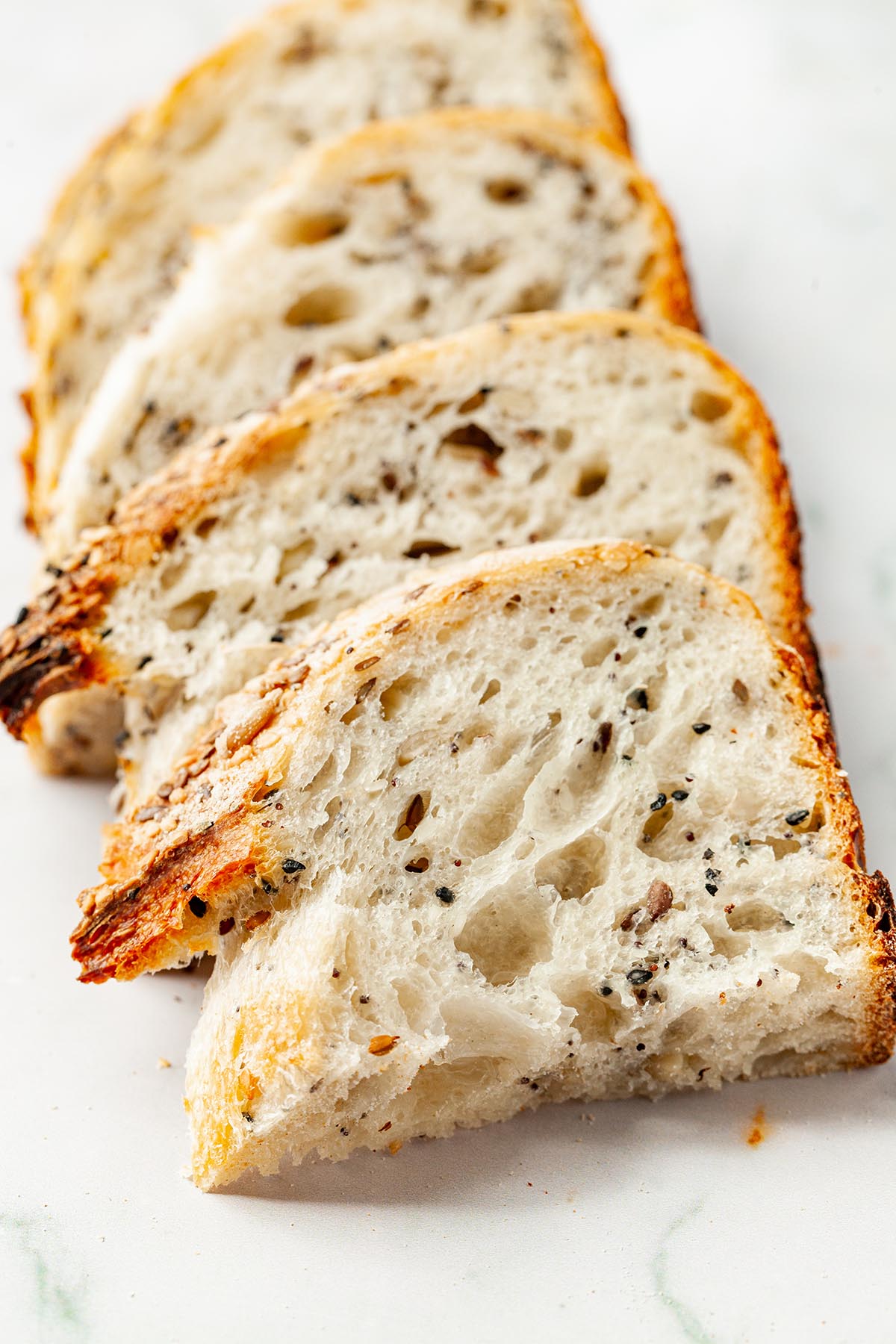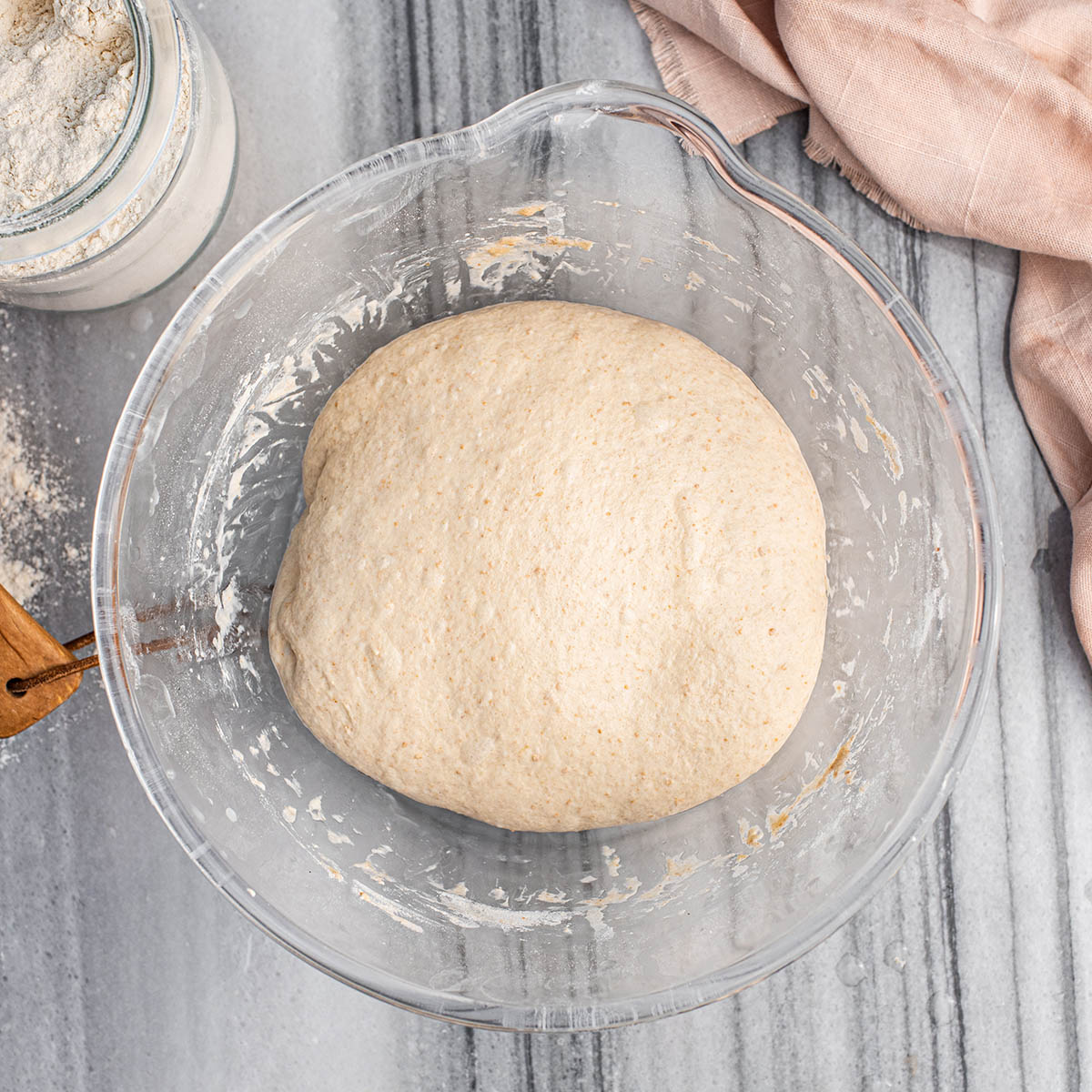Can I Stretch Bread Dough by Rolling It Out
A photo tutorial of the stretch and fold method for sourdough bread. This no-knead technique is the most popular for sourdough, and very easy.

The stretch and fold method is the most common for a reason – it's easy for just about everyone, and doesn't require any special equipment. Stretching and folding is what replaces kneading in many sourdough recipes.
Stretching and folding helps activate the gluten in wheat flour, making it easier to work with and shape. If you skip stretching and folding, chances are you will end up with soggy dough that doesn't hold its shape before or during baking. Developed strands of gluten help hold the bread together as it bakes, and contributes to a strong upward rise (called oven spring) rather than spread during baking.
Some recipes, like this overnight rye sourdough, don't call for any stretches and folds. For lower gluten breads, the stretching and folding process can be less effective or even unnecessary, however, most of our loaves here on BAKED call for at least a few rounds.
Continue reading our basic stretching and folding technique with simple step-by-step photos!
Jump to:
- Method
- Tips and Notes
- Water vs Flour

Method
After mixing sourdough dough, you generally let it rest for 20 to 30 minutes before starting on your stretch and folds. Each recipe is different, so refer to them individually.
Once that first 20 to 30 minute rest (called autolyse) is over, you are ready to begin your first round of stretch and folds.

Lightly wet the hand you will use to handle the dough (see below).
Keep your fingers together and scoop them underneath one side of the dough. Lift the dough upward as far as you can, gently stretching it but not tearing it (although if some tearing does occur don't stress because it does happen).

Fold the stretched dough over itself inside the bowl. Hooray! You've just done your first stretch and fold!

Rotate the bowl a quarter turn and repeat the same steps again. Repeat on all four sides of the dough. You can wet your hands as needed to prevent the dough from sticking too much. When all four quadrants of the dough have been stretched and folded, you have completed one round of stretch and folds. Most recipes call for three or four rounds of stretch and folds, repeated every 20 minutes or so.
By the last round, the dough should keep its shape, and not feel as sticky as it did at the start. It may also have small bubbles on the surface depending on the recipe.

Tips and Notes
Stickiness – Most sourdough bread recipes, especially round loaves (called boules), will be relatively high in hydration (meaning a higher water to flour ratio). High hydration dough is very sticky. As you complete your rounds of stretches and folds, the dough will become easier to handle, with the stickiness decreasing as the gluten develops.
Dough Strength – Every stretch and fold will make a big difference in the strength of your dough as the gluten activates. One round of stretch and folds will yield a loose blob, almost the same as not doing any at all. Three rounds or more, with rests in between, will help create the structure needed for a loaf to hold its shape.
Beyond Gluten – Stretch and folds have more purpose than just gluten development. They also remove gas bubbles from the dough, aka large air pockets. They also help even out the temperature of the sourdough. Temperature is important if the dough is fermenting in a warm place, as the outside will warm more quickly than the interior.
Rest Periods – We set the dough aside to rest between stretch and folds so the gluten can relax. Without this step – say if you were to do 10 stretches all at once – the dough would tear. A higher hydration dough needs a shorter rest time, and a lower hydration dough will need more time between each fold.
Water vs Flour
There are some conflicting ideas on whether you should wet your hands or use flour for stretching and folding. Either choice will affect the hydration percentages of your dough – just very slightly – but we like wetting our hands for a couple of reasons:
- It's tidier than flour. You will need much less water than flour to prevent sticking! Plus, you won't have floury bits stuck to your hands, which can be a pain to wash off.
- Although this isn't an issue for casual bakers, using flour in excess can cause baker's lung or baker's asthma, which can result in a host of respiratory issues. Excessive flour use can also cause dermatitis and will dry out your hands even if you're only baking once a week.
Only you can determine which method works best for you, however, if you're just starting out, we think it's worth it to use water from the beginning.
More Sourdough Basics
Sourdough Tools
Sourdough Starter
Everyday No-Knead Sourdough
Can I Stretch Bread Dough by Rolling It Out
Source: https://www.baked-theblog.com/how-to-stretch-and-fold-for-sourdough/
0 Response to "Can I Stretch Bread Dough by Rolling It Out"
Post a Comment